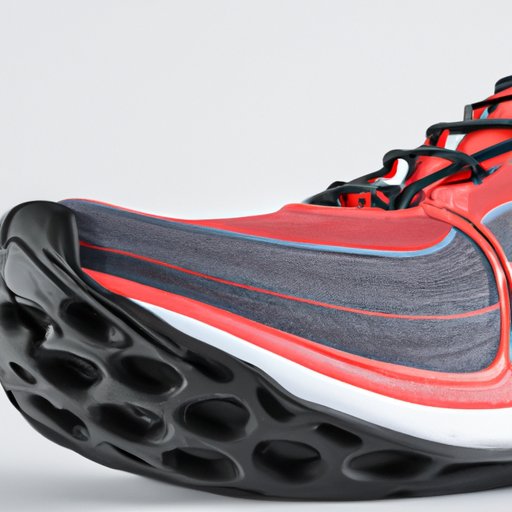Introduction
Running is an excellent form of exercise, but it can be difficult to find the right pair of running shoes. Choosing the wrong pair of shoes can lead to injuries or discomfort while running, so it’s important to take the time to understand your foot type and find the perfect fit. This article will provide a comprehensive guide for beginners on how to fit running shoes.
Identify Your Foot Type and Analyze the Fit of Your Running Shoes
The first step in fitting running shoes is to understand your foot type. There are three main types of feet: flat feet, high arches, and neutral feet. Flat feet tend to roll inward when walking or running, while high arches tend to roll outward. Neutral feet have a balanced arch that does not roll too much in either direction. Once you have identified your foot type, you can begin to analyze the fit of your shoes.
The best way to measure your feet is with a Brannock device, which is a tool designed specifically for measuring feet. You should also measure both feet and use the larger measurement when selecting your shoes. When trying on the shoes, make sure that there is enough space in the toe box for your toes to move freely. The heel should fit snugly against the back of the shoe, and the midsole should provide adequate cushioning for your feet.
Understand the Different Types of Running Shoes Available
Once you have identified your foot type and measured your feet, it is important to understand the different types of running shoes available. Neutral running shoes are best suited for those with neutral feet, as they do not provide any extra support or stability. Stability running shoes are designed to provide support and stability for those with flat feet or high arches. Trail running shoes are ideal for those who regularly run on uneven terrain, as they provide more grip and protection. Motion control shoes are designed for those with flat feet, as they provide extra stability and support.

Find the Right Size for Your Feet
When trying on running shoes, it is important to find the right size for your feet. As mentioned above, you should use a Brannock device to measure your feet and use the larger measurement when selecting your shoes. You should also try on several different sizes to ensure that you get the best fit. Additionally, you should consider the width of the shoe, as some people may need wider shoes for a better fit.
Look for Comfort and Support
Once you have found the right size for your feet, it is important to look for comfort and support. Make sure that the shoe fits snugly without being too tight, and test the cushioning to ensure that it provides enough support for your feet. Additionally, check for arch support to make sure that your feet are properly supported while running.

Choose a Shoe with Appropriate Cushioning
When selecting a running shoe, it is important to choose one with the right amount of cushioning. The amount of cushioning you need will depend on the terrain you will be running on. If you are running on hard surfaces such as roads or pavements, you should opt for a shoe with more cushioning. If you are running on softer surfaces such as trails, you may want to opt for a shoe with less cushioning.

Use Your Laces to Get the Perfect Fit
Once you have selected the right shoe for your feet, it is important to use your laces to get the perfect fit. Make sure to tighten the laces properly, and tie them in a way that works for you. Some people prefer to tie their laces in a criss-cross pattern, while others prefer to tie them in a single loop.

Consider Specialty Shoes for Specific Conditions
For those who run in wet or muddy conditions, it is important to invest in specialty shoes designed for such conditions. Additionally, if you plan on doing long-distance running, you may want to invest in shoes with more cushioning to ensure your feet are comfortable over long distances. Finally, if you suffer from any foot-related conditions such as plantar fasciitis, you may want to look for shoes designed specifically for such conditions.
Conclusion
Fitting running shoes can be a daunting task, but it is essential for ensuring comfort and support while running. By understanding your foot type, analyzing the fit of your shoes, and finding the right size and cushioning, you can find the perfect pair of running shoes for your feet. Additionally, using your laces to get the perfect fit and investing in specialty shoes for specific conditions can help ensure a comfortable and enjoyable running experience.


